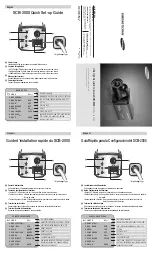
Model IR5500
11
3.5 Conduit Sealing
Each conduit run from a hazardous to a non-hazardous location should be sealed so that gas
or flames cannot pass from one electrical installation to another through the conduit system.
A conduit seal must also be installed within 18 inches of the Source and Receiver enclosure if
installed in a Division 1 location. A conduit seal may not be required if installed in a Division 2
location.
General Monitors requires the use of a drain loop or conduit seal in the conduit to prevent
moisture from entering the unit housing. For installation in a Division 2 location using Division
2 wiring methods, a drain loop or conduit seal may not be required. Consult Article 501 of the
NEC for details.
WARNING:
The conduit entries should be sealed per the NEC 501.15 or Canadian
Electrical Code Handbook (Part 1, Section 18-154) for Division 1 installations.
WARNING:
Unused cable entry holes must be sealed with an approved explosion-proof
stopping plug.
CAUTION:
Acetic acid will damage metal components, hardware, and other components.
If damage results from the use of a sealant that outgases acetic acid such as a
room temperature vulcanizing sealant (RTV), the two-year warranty will be
void.
CAUTION:
Consult the manufacturer for dimensional information on the flameproof joints
for repair.
3.6 Terminal Connections
To make the wiring connections to the Model IR5500, loosen the retaining screw on the cover
of each unit using the supplied hex wrench and unscrew the rear cover. All output
connections are made inside the housing (see figures on following page for terminal block
locations). Stripping length is 4/10” (10 mm) for push terminals, ½” (11 mm) for screw
terminals.
NOTE
:
Contact with printed circuit board (PCB) components should be avoided to prevent
damage by static electricity.
















































